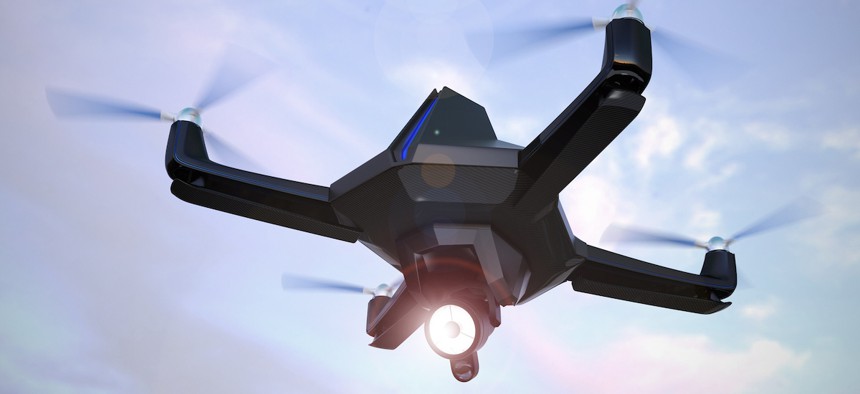Finding the right drone for the job

Chesky_W/Getty Images
With MITRE’s Drone Selector, public safety agencies input their desired tasks and locality to see details on all drones that meet their requirements and can operate under current state and local regulations.
For public safety agencies looking to introduce drones to their workflow, an online tool can help narrow down the options.
MITRE’s interactive Drone Selector lets users search for drones based on their features using filters such as digital or infrared camera preferences, minimum and maximum speed functionality and temperature restrictions. Users can also filter by their location and level of security, including Blue UAS compliance.
Currently, public safety agencies informally check in with neighboring departments or reach out to salespeople to gather information on drones, MITRE Senior Manager Steve King said. But these strategies have limitations. For instance, the nearby county may use an older drone that is outmatched by more modern models, and salespeople may have biases toward certain products, he said.
Local agencies typically do not have full-time positions dedicated to drones, and it’s nearly impossible for public safety officers to evaluate hundreds of devices by themselves, he added. But there is a “dramatically increasing demand … in drones of all kinds, whether they’re tethered drones or quadcopters.”
Despite public safety’s growing interest in drones, governments at every level are questioning the potential threat to national security posed by technology from countries such as China. In early April, for instance, Florida banned government agencies from using drones and other unmanned aerial systems made in a number of foreign countries. Not long after, Arkansas passed similar legislation prohibiting law enforcement agencies from purchasing many foreign-made drones starting in 2027.
“As we become aware of these requirements or constraints [at the state, local and federal level], we will incorporate those in the dropdown selector on the website to allow people to say, ‘Yes, this applies to me,’” King said.
There are always “exciting new products that may better meet your needs as a fire department, police department or sheriff’s office, but you just may now know about it,” he said. With Drone Selector, first responders can go in, identify their requirements and find the drone that meets those needs, he added.
For instance, police may want drones to conduct accident reconstructions, while a fire department may use drones for wildfire detection. These use cases warrant unique drone features, which users can insert into the tool to select devices that align with agency goals, he said.
To populate the tool with drone specifications, MITRE pulls data from manufacturers, King said. Any missed details are verified with a phone call to the manufacturer.
MITRE has also begun testing drones to compare their true abilities with what they are advertised to do, he said. “We might be told, ‘Hey, that drone on a fully charged battery will fly for 30 minutes,’ and we’ll get it and won’t be able to fly it more than 18 minutes.” Such discrepancies will be noted on the drone selector site, he added.
As MITRE continues to gather drone data, King said the tool is slated for a major upgrade this summer that will add more drone manufacturers and updated information on state, local or federal restrictions. Future refreshes will be dependent on public interest, he said.
“We want to be responsive … and make sure that we can offer everyone an easier way to pick the best drone or small UAS for their needs,” King said.






